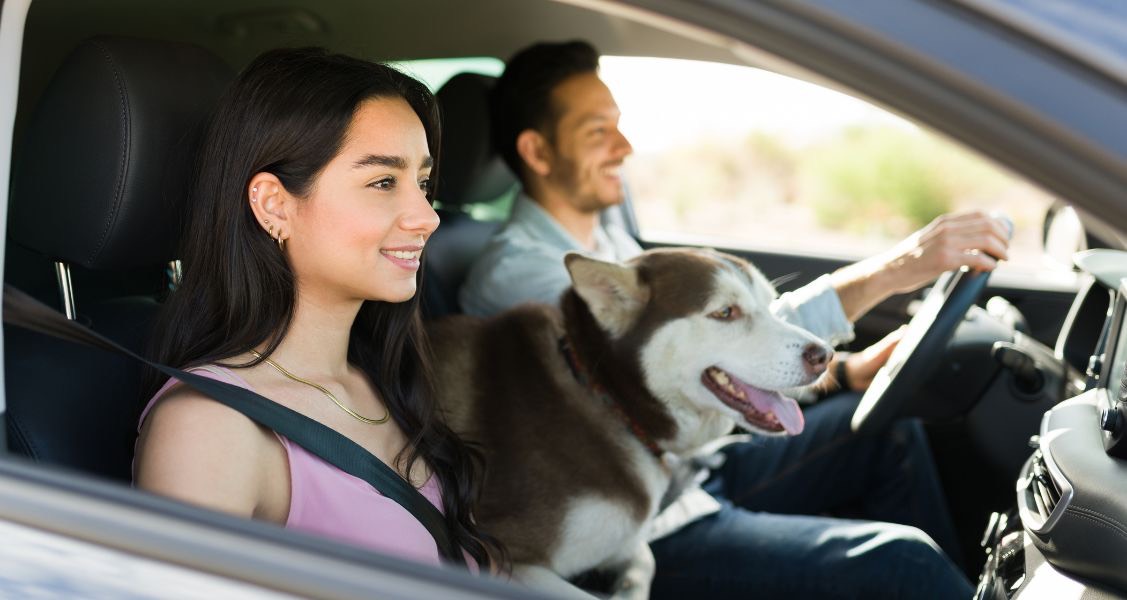Pets On-The-Go: Considerations When Driving With Pets
Apr 23, 2024

If you’re a proud pet owner, you know how exhilarating it is to travel with your fluffy friends. Every woof and meow along the way creates memories to cherish. But, ensuring an enjoyable experience for both humans and pets requires some wag-worthy preparation. From safety to comfort and health considerations to legalities, this guide covers all the bases for pets on the go with key driving considerations.
Driving with Dogs and Cats
The sight of a pooch poking its head out the car window is an icon of freedom and adventure. But as the number of people traveling with pets continues to rise, it’s essential to pair that freedom with responsibility. When driving, the well-being of your cat or dog, not to mention your own safety, demands that you understand the ins and outs of pet travel.
Safety 101: Restraining Your Best Friend
When you’re driving with pets, think of proper restraints as seat belts for them. It’s not just about keeping them from playing shotgun—in the unfortunate event of an accident, restraints prevent injury to your pet and could save their lives. If your pet isn’t a fan of the carrier or a seatbelt, start getting them used to it ahead of time by creating positive associations with treats and comfort inside the restraint system.
Pre-Journey Prep: Pack Smart and Make It Cozy
Just as you pack your essentials, don’t forget about your pet’s must-haves. Meals, meds, and favorite toys might seem obvious, but have you considered how to make your pet feel at home in your car? Bringing their bed or a familiar blanket can significantly reduce anxiety during the trip. Similarly, laying down some protective covers can save your car’s interior and make cleaning up pet hair a breeze.
Health and Comfort on the Move
Keeping your four-legged friend healthy and happy on the road involves more than just a bowl of kibble and scratching behind the ears. For long trips, it’s best not to feed pets immediately before departure to reduce the chance of carsickness. Frequent hydration is also key, so bring water and a portable dish. Some pets do well with the occasional treat to stave off motion sickness, so always keep something familiar and comforting on hand.
Navigating Legality and Distraction
There’s more at stake than just logistics. Legal measures, such as local seatbelt laws for pets or restrictions on window-down cruising for safety, can vary by region. Ensuring that your pet isn’t moving or barking distraction while you drive is also critical. It guarantees everyone’s focus is on the road and on protecting pets from injury or discomfort.
Making Memorable Pit Stops
Every creature, big or small, needs a break. Plan your route to include pet-friendly stops where they can stretch their legs and relieve themselves. Being cooped up is no fun, so a chance to run around and explore is beneficial for their mental and physical health.
These considerations when driving with pets keep you on the go and adventuring both near and far. These experiences with your pet offer a unique bond that will last a lifetime. With thoughtful planning and the right approach, pet-friendly road trips can be enjoyable and safe for everyone involved. Remember to cherish these moments, even when the cat decides the driver’s lap is prime real estate in the vehicle.


Disclaimer: healthcareforpets.com and its team of veterinarians and clinicians do not endorse any products, services, or recommended advice. All advice presented by our veterinarians, clinicians, tools, resources, etc is not meant to replace a regular physical exam and consultation with your primary veterinarian or other clinicians. We always encourage you to seek medical advice from your regular veterinarian.

